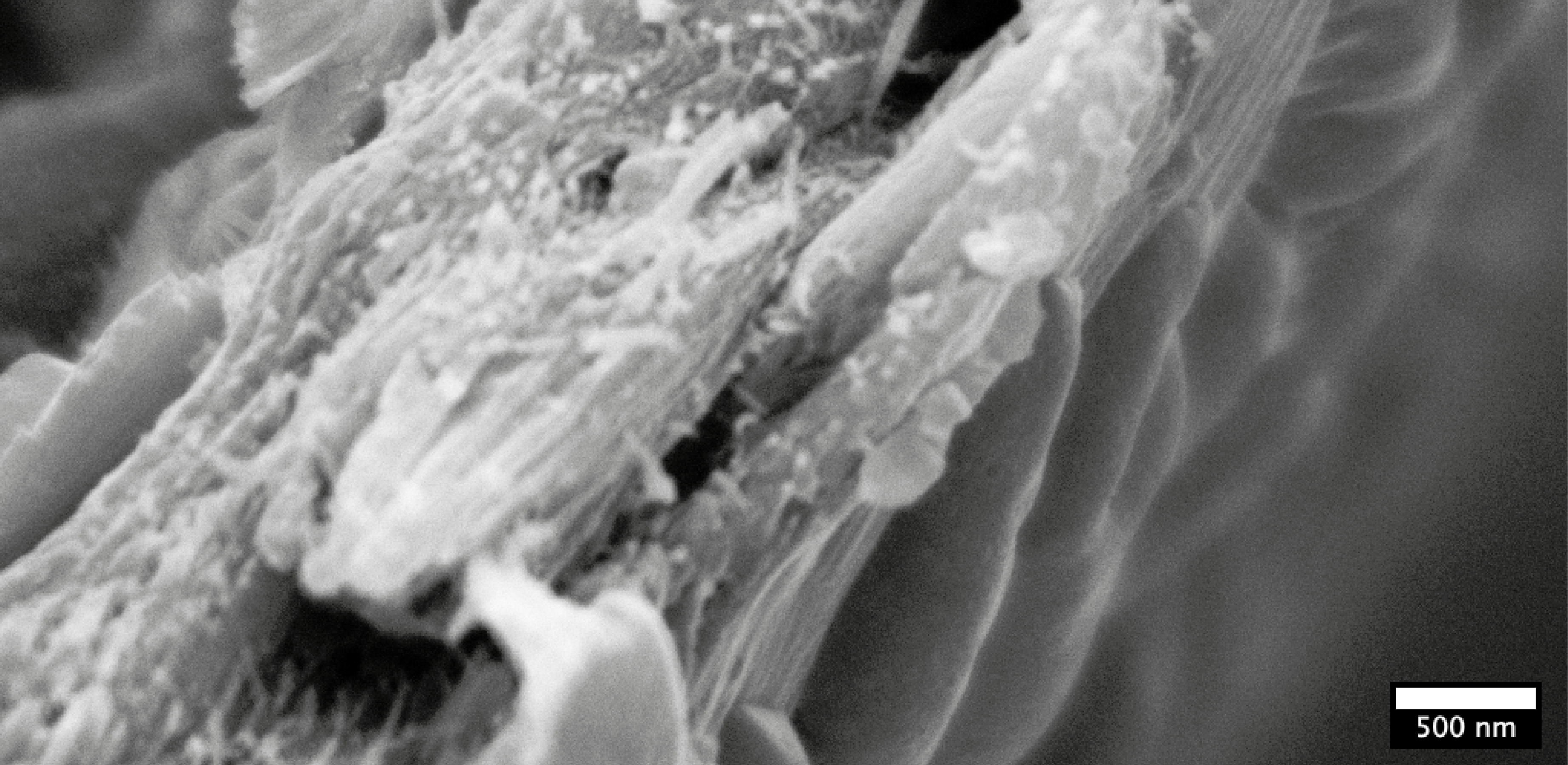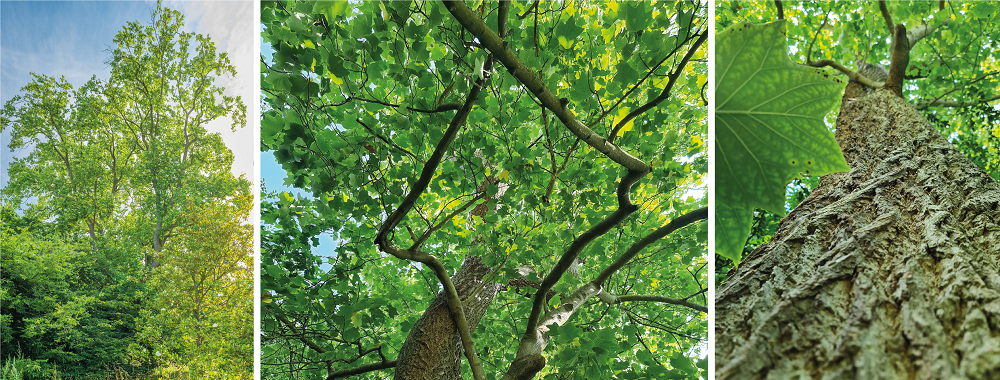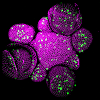
Scientists discover entirely new wood type that could be highly efficient at carbon storage
Researchers have identified an entirely new type of wood that does not fit into either category of hardwood or softwood.
Scientists from the Sainsbury Laboratory Cambridge University and Jagiellonian University, Poland made the discovery while undertaking an evolutionary survey of the microscopic structure of wood from some of the world’s most iconic trees and shrubs.
They found that Tulip Trees, which are related to magnolias and can grow over 100 feet tall, have this unique type of wood. This discovery may explain why the trees, which diverged from magnolias when earth's atmospheric CO2 concentrations were relatively low, grow so tall and so fast. This revelation opens new opportunities to improve carbon capture and storage in plantation forests by planting a fast-growing tree more commonly seen in ornamental gardens or breeding/engineering Tulip Tree-like wood into other tree species.
The discovery was part of an evolutionary survey of the microscopic structure of wood from 33 tree species from the Cambridge University Botanic Garden’s Living Collections. The survey explored how wood ultrastructure evolved across softwoods (gymnosperms such as pines and conifers) and hardwoods (angiosperms including oak, ash, birch, and eucalypts).
The wood samples were collected from trees in the Botanic Garden in coordination with its Collections Coordinator. Fresh samples of wood deposited in the previous spring growing season, were collected from a selection of trees to reflect the evolutionary history of gymnosperm and angiosperm populations as they diverged and evolved.
Using the Sainsbury Laboratory's low temperature scanning electron microscope (cryo-SEM), they imaged and measured the size of the nanoscale architecture of secondary cell walls (wood) in their native hydrated state.
Microscopy Core Facility Manager at the Sainsbury Laboratory, Dr Raymond Wightman, said: “We analysed some of the world’s most iconic trees like the Coast Redwood, Wollemi Pine and so-called “living fossils” such as Amborella trichopoda, which is the sole surviving species of a family of plants that was the earliest still existing group to evolve separately from all other flowering plants.
“Our survey data has given us new insights into the evolutionary relationships between wood nanostructure and the cell wall composition, which differs across the lineages of angiosperm and gymnosperm plants. Angiosperm cell walls possess characteristic narrower elementary units, called macrofibrils, compared to gymnosperms and this small macrofibril emerged after divergence from the Amborella trichopoda ancestor.”
The researchers found the two surviving species of the ancient Liriodendron genus, commonly known as the Tulip Tree (Liriodendron tulipifera) and Chinese Tulip Tree (Liriodendron chinense) have much larger macrofibrils than their hardwood relatives.
Hardwood angiosperm macrofibrils are about 15 nanometres in diameter and faster growing softwood gymnosperm macrofibrils have larger 25 nanometre macrofibrils. Tulip Trees have macrofibrils somewhere in-between measuring 20 nanometres.
Lead author of the research published in New Phytologist, Dr Jan Łyczakowski from Jagiellonian University, said: “We show Liriodendrons have an intermediate macrofibril structure that is significantly different from the structure of either softwood or hardwood. Liriodendrons diverged from Magnolia Trees around 30-50 million years ago, which coincided with a rapid reduction in atmospheric CO2. This might help explain why Tulip Trees are highly effective at carbon storage.”
The team suspect it is the larger macrofibrils in this “midwood” or “accumulator-wood” that is behind the Tulip Trees’ rapid growth.
Łyczakowski added: “Both Tulip Tree species are known to be exceptionally efficient at locking in carbon, and their enlarged macrofibril structure could be an adaptation to help them more readily capture and store larger quantities of carbon when the availability of atmospheric carbon was being reduced. Tulip Trees may end up being useful for carbon capture plantations. Some east Asian countries are already using Liriodendron plantations to efficiently lock in carbon, and we now think this might be related to its novel wood structure.”
Liriodendron tulipifera are native to northern America and Liriodendron chinense is a native species of central and southern China and Vietnam.
Łyczakowski said: “Despite its importance, we know little about how the structure of wood evolves and adapts to the external environment. We made some key new discoveries in this survey – an entirely novel form of wood ultrastructure never observed before and a family of gymnosperms with angiosperm-like hardwood instead of the typical gymnosperm softwood.
“The main building blocks of wood are the secondary cell walls, and it is the architecture of these cell walls that give wood its density and strength that we rely on for construction. Secondary cell walls are also the largest repository of carbon in the biosphere, which makes it even more important to understand their diversity to further our carbon capture programmes to help mitigate climate change.”
Wood ultrastructureWood ultrastructure refers to the detailed microscopic architecture of wood, encompassing the arrangement and organisation of its material components. This survey of wood using a cryo-scanning electron microscope focused on:
Studying the wood ultrastructure is crucial for various applications, including wood processing, material science, and understanding the ecological and evolutionary aspects of trees. Understanding the biology behind tree growth and wood deposition is also valuable information when calculating carbon capture. |
Lyczakowski and Wightman also analysed the cell wall macrofibrils of two gymnosperm plants in the Gnetophytes family – Gnetum gnemon and Gnetum edule – and confirmed both have a secondary cell wall ultrastructure synonymous with the hardwood cell wall structures of angiosperms.
This is an example of convergent evolution where the Gnetophytes have independently evolved a hardwood-type structure normally only seen in angiosperms.
The Living Collections of the Cambridge University Botanic Garden
The wood survey was undertaken in the Cambridge University Botanic Garden while the UK was sweltering under the UK’s 4th hottest ever recorded summer in 2022.
“We think this could be the largest survey, using a cryo-electron microscope, of woody plants ever done,” Wightman said. “It was only possible to do such a large survey of fresh hydrated wood because the Sainsbury Lab is located within the grounds of the Cambridge University Botanic Garden. We collected all the samples during the summer of 2022 – collecting in the early morning, freezing the samples in ultra-cold slush nitrogen and then imaging the samples through to midnight.
“This research illustrates the continued value and impact that botanic gardens have in contributing to modern day research. This study would not be possible without having such a diverse selection of plants represented through evolutionary time, all growing together in the same place in the Cambridge University Botanic Garden’s Collections.”
Reference
Jan J Łyczakowski and Raymond Wightman (2024) Convergent and adaptive evolution drove change of secondary cell wall ultrastructure in extant lineages of seed plants. New Phytologist.
DOI: https://doi.org/10.1111/nph.19983
View images
All cryo-SEM images from the wood survey are publicly available in this Mendeley repository.
Funding
This research was supported by grants from National Science Centre Poland and The Gatsby Charitable Foundation.
About New Phytologist
New Phytologist is a leading international journal focusing on high quality, original research across the broad spectrum of plant sciences, from intracellular processes through to global environmental change. The journal is owned by the New Phytologist Foundation, a not-for-profit organisation dedicated to the promotion of plant science. https://www.newphytologist.org/
About Jagiellonian University
The Jagiellonian University is the oldest higher education institution in Poland and one of the oldest in Europe. It was founded more than 650 years ago, on 12 May 1364, by the Polish king Casimir the Great. Today, the Jagiellonian University comprises 16 Faculties, where nearly 4 thousand academic staff conduct research and provide education to almost 40 thousand students, within the framework of more than 150 different fields of study. Eminent researchers and state-of-the-art infrastructure make the JU one of the leading Polish scientific institutions, collaborating with major academic centres from all over the world.
About Sainsbury Laboratory Cambridge University
The Sainsbury Laboratory Cambridge University (SLCU) is a plant science research institute funded by The Gatsby Charitable Foundation. SLCU is focused on increasing understanding of the regulatory systems underlying plant growth and development and brings together specialists in biological, physical, and mathematical sciences integrating a range of wet-lab experimental research with computational modelling. This interdisciplinary approach is essential for understanding the complex dynamic and self-organising properties of plants. The Sainsbury Laboratory houses 13 research groups focussing on fundamental plant developmental biology, which is paramount for the long-term security of a sustainable supply of food and other plant products, such as fuel, fibres and building materials.







